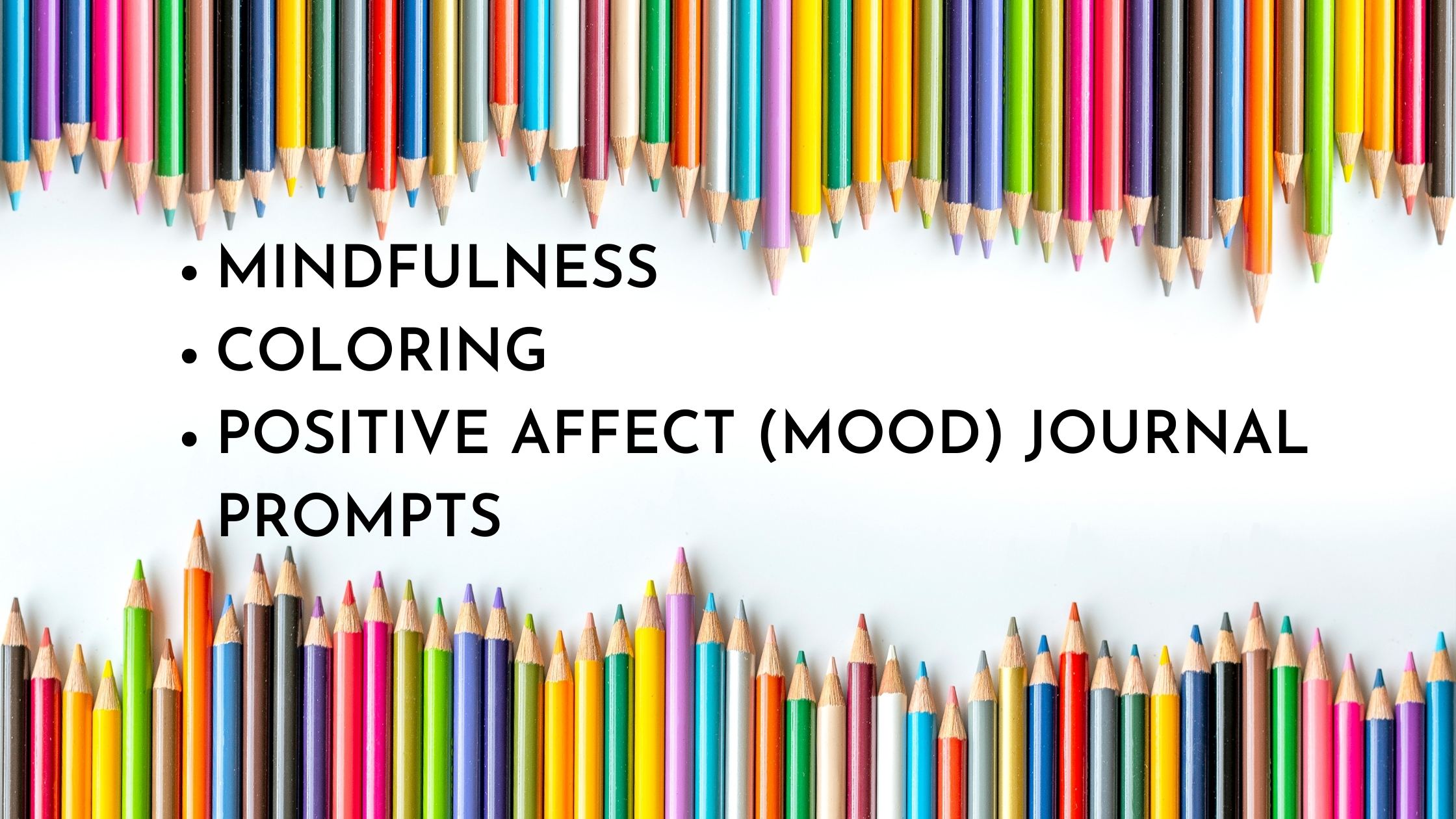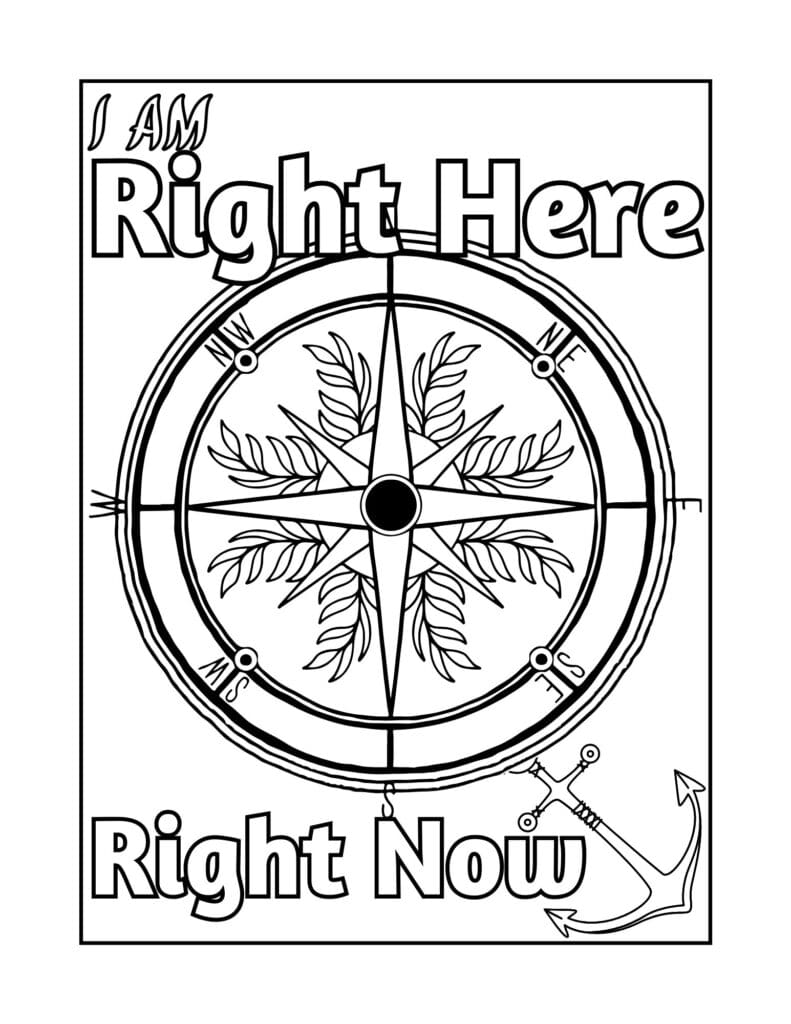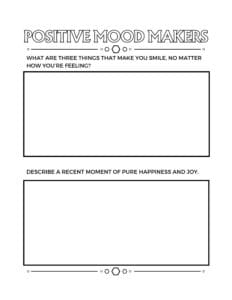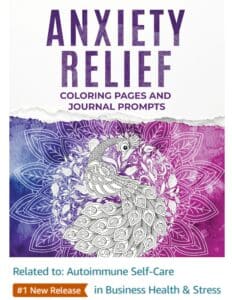How to Improve Anxiety Naturally

For the past two decades, rates of anxiety have risen dramatically, particularly among young adults. During the early pandemic, rates of anxiety jumped even higher. Given the trend, more people want to know how to improve anxiety naturally.
I want to tell you about research-backed non-drug methods for anxiety relief you can start today.
- Mindfulness
- Coloring (jump down to it)
- (Positive Affect/Mood) Journaling
In each section, I’ll tell you what the research says about the strategy, and how to use it.
What is mindfulness?
According to research, mindfulness activities are helpful for things like reducing anxiety and chronic pain, just to name a few.
But what is it, really?
I’m willing to bet you’ve heard the term mindfulness plenty of times. You may already know what it’s about. Or, you may even be practicing it now. First I want to clear up some common misconceptions about mindfulness. Here’s what it is NOT:
- Focusing or contemplating on a certain thought or idea.
- Making your mind go “blank”.
- Forgetting the past.
- A quick cure for long-term stress.
- Abandoning people and tasks that need your attention.
- Critical of having “too many” or “the wrong” thoughts.
- Embracing and taking on a new religion. While it was founded in Buddhism, the Western approach just emphasizes the process.
So, let’s talk about what it is.
First, there isn’t one “correct” definition. Lots of gurus have defined it over the years. While I don’t consider myself a “guru”, this is how I would explain it:
- Filling your attention with what’s here with you, in this very moment, right now… and right now… and right now.
- Telling yourself the priority for what gets space in your head right now is something your senses are picking up, and nothing else has to be there.
- Allowing other thoughts to exist, observing what they are, and giving yourself permission to put them down for now.
- Remaining non-judgmental about any thoughts, emotions, and physical sensations that arise during the moments you are being mindful. You just note that they’re there, but you can let go of them for now.
For the purposes of this page, I’m going to use one by the author of a book about something called “Acceptance and Commitment Therapy”. Here’s how he defines it*:
“Contacting the present moment, or flexible attention, means the ability to make full conscious contact with both your inner and outer worlds to narrow, broaden, shift, or sustain your focus, depending on what’s most useful”.
Russ Harris: ACT Made Simple: An Easy-to-Read Primer on Acceptance and Commitment Therapy
Contacting the present moment
Think about where your attention is much of the time. Have you ever been riding in or driving down a road for a while, then thought “wait, did I pass that store, or that bridge, or street, or whatever?”. I have done that more times than I can count. We spend so much of our lives with our bodies doing routine things on automatic pilot – while our mind is churning out thoughts that are about anything but where we are and the thing we’re doing. In other words, your body’s doing something, and you’re not even consciously aware of it at that moment. Why does this matter?
When we’re not being mindful, our thoughts can jump from topic to topic at such a speed we have no idea how we got from “I need to bring my such-and-such today” to “who does so-and-so think he is?!?!?”. It doesn’t take long for our thoughts to start going in one direction, only to be knocked off track by something one of our thoughts reminded us of, then our mind heads in another direction, then yet another.
The next thing you know, you’re feeling anxious, angry, sad, or something else, and have no idea how you got there.
When you think about attention, you realize it can only hold so much at any one point in time. So when we talk about mindfulness, what we’re saying is: filling that space of attention with what’s here at this very moment.
Right now, right now, and right now.
You could think of it as telling yourself the priority, for what gets space in your head these moments is just what your senses are picking up. And it’s okay to put down everything else that pops into your mind.
So, when we talk about mindfulness, we are in contact with the present moment. Life is a whole lot easier when you know where your mind is and you decide what to think about, don’t you think?
Flexible attention
Now, being mentally present in the moment is certainly good, but are there ever times when we want our mind to access another place, time, or perspective? Of course.
We need to be able to remember things. Or plan for some time in the future. Or think about possibilities or get creative. Clearly, we want to be able to do that, and we need our minds to shift in and out of all those places. But we want it to happen when we will it to – we want to be in the driver’s seat. Having that intentional flexible attention is crucial if we want to live according to what we value most in life.
Remaining non-judgemental
One element of mindfulness is key: Remaining non-judgmental about any thoughts, emotions, and physical sensations that arise during the moments that you’re being mindful. This serves to help us detach our internal evaluations (thinking things are bad or good) from things we experience, do, or think. Keeping a neutrally observing state of mind is one of the most important things we can do to ease our suffering.
How to practice mindfulness

Whether you’re setting aside quiet time for structured mindfulness time or squeezing in a moment here and there, choose something your senses are picking up on as an object of focus. Consider it your “anchor”.
Similar to a boat left adrift, currents, winds, and wakes can send us in all different directions. But when we drop an anchor, those things can only bump us so far. The anchor will keep reminding us where we are, and keep us from drifting somewhere we didn’t want to go.
This can be the sensation of air moving in and out of your lungs or through your nose. It can be the feeling of the ground beneath your feet, the sensation of something soft in your hand, the sound of water trickling over stones in a creek, the shine on a smooth stone, the scent of a nearby flower, or color going from a pencil onto a page.
Each time a critical thought pops into your head, you observe that it happened, but don’t follow it. Let it pass by.
Click here to Listen to this amazing podcast episode about “Anxiety Awareness”.
Here’s where coloring comes in
Studies have shown that coloring a mandala, for example, or drawing freely, can reduce anxiety. This applies both to self-reported improvements and objective measurements including heart rate variability.
But what do scientists tell us can make it even more effective? Guiding that coloring process to keep the user focused and mindful while they’re doing it.
Now there are tons of coloring books on the market titled “mindfulness” or “stress relieving”, but to be really effective, there should be more than just an image on a page to color in.
That’s why I created a coloring book that emphasizes mindfulness through text prompts.

My anxiety relief coloring pages and journal prompts are designed to tap into what we know works for reducing anxiety through mindfulness and positive states of mind.
Shifting into positive mode: Where journaling comes in
Studies have also begun to demonstrate that what is known as “positive affect” journaling is more effective in improving our states of mind than journaling about negative thoughts, feelings and experiences. Basically, this means that when we write about things that elicit “good” emotions, we can reduce the stress we feel and also help the body heal.

If you want to know more about how it helps the body heal, take a look at this video (with transcript right below it) that explains even more about mindfulness, journaling and the health benefits for and how it can even help manage chronic pain.
Click below to grab a sample page from the book!
